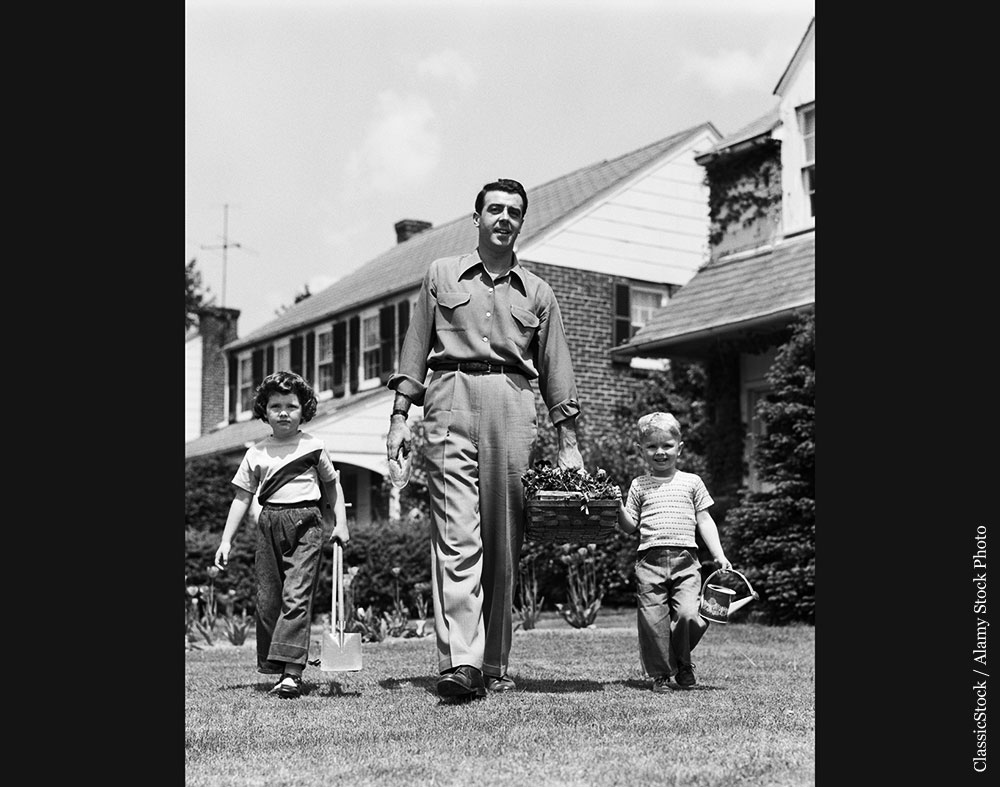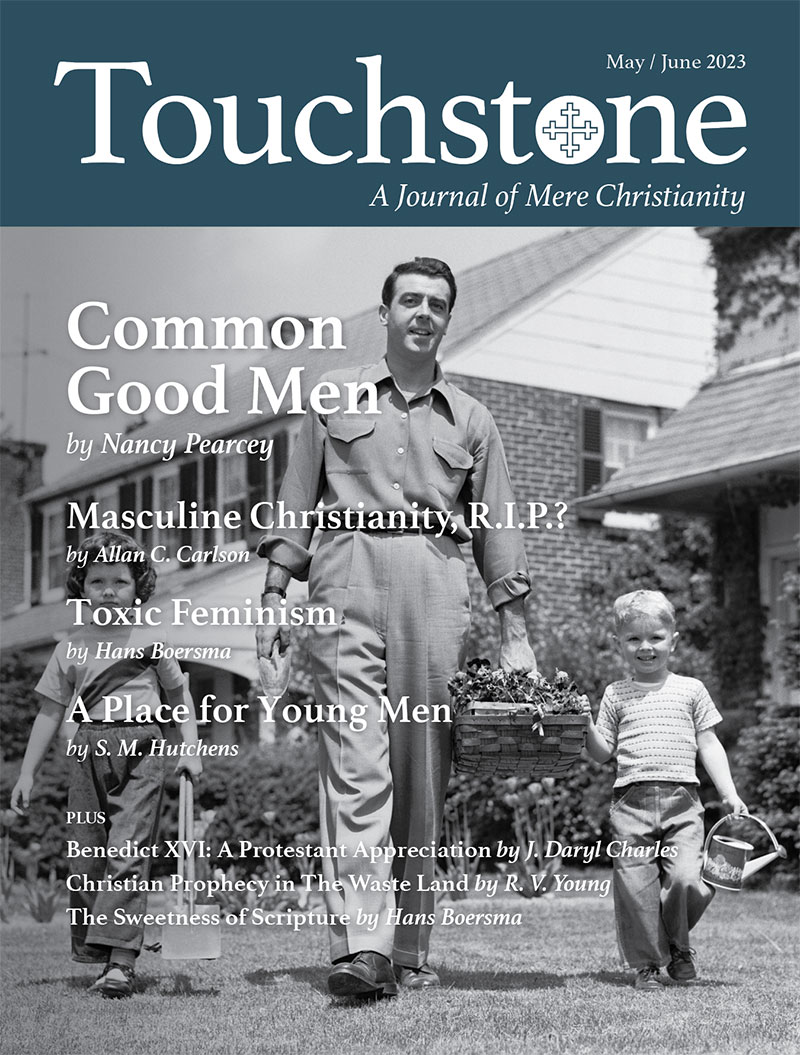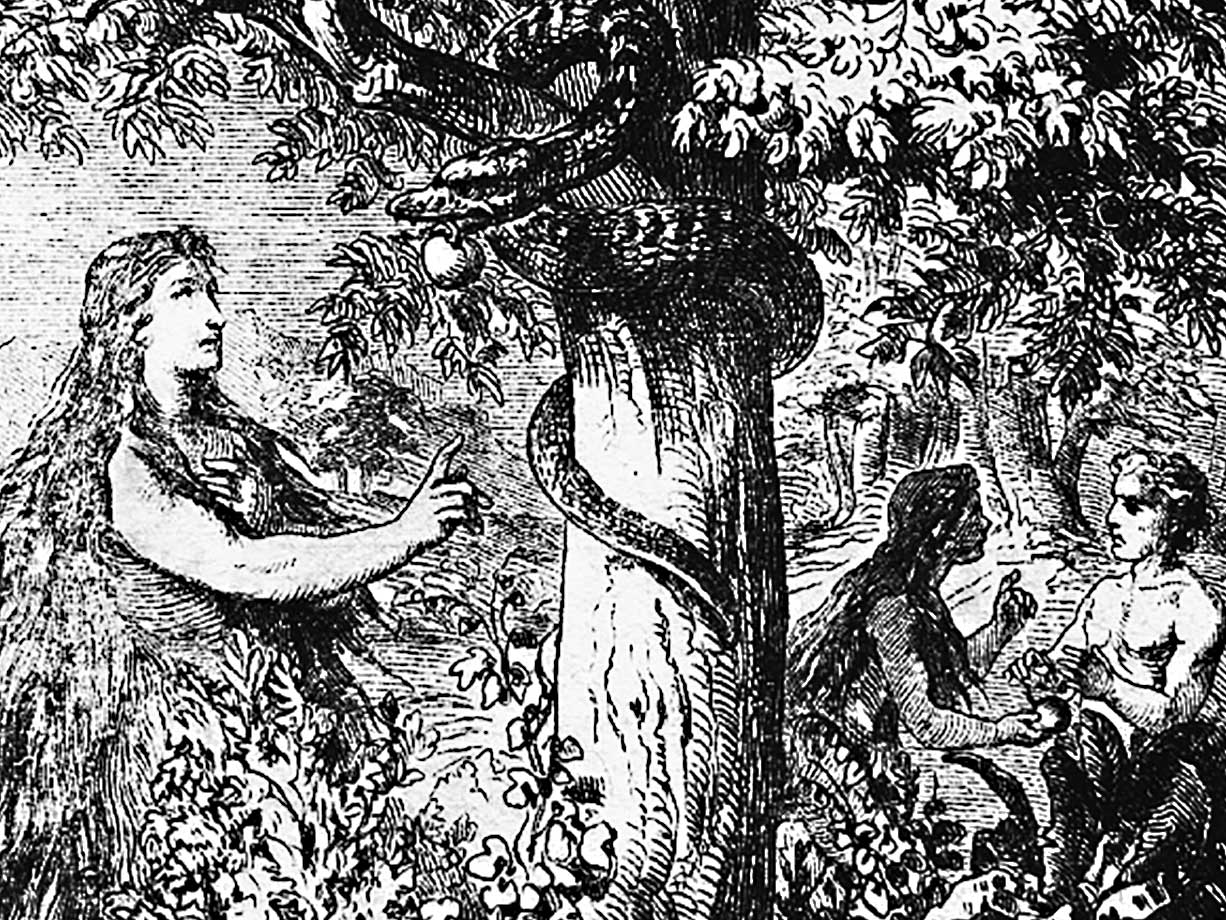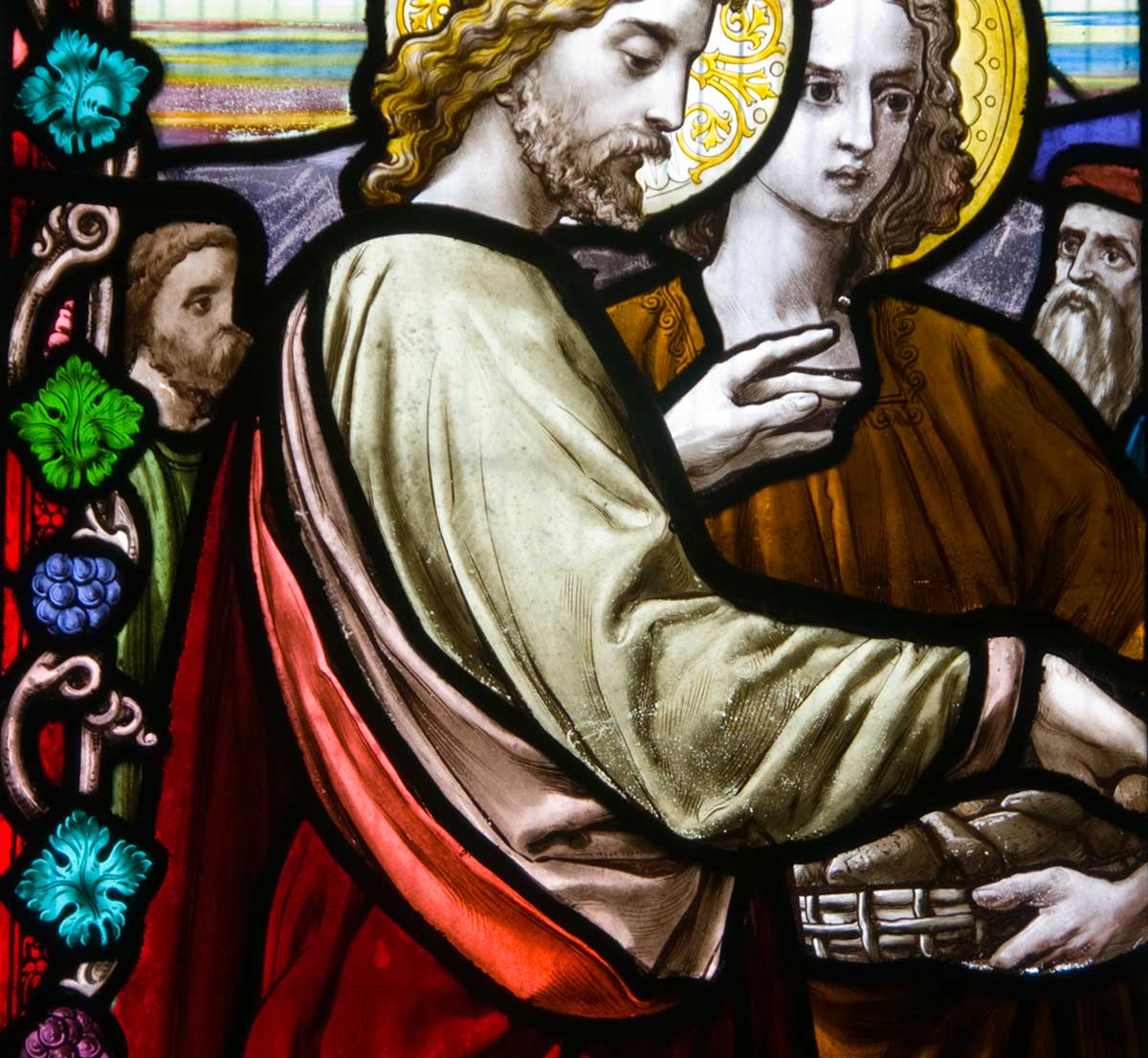Common Good Men
The Lost Authority of Godly Men
It’s no secret that the public rhetoric against men has grown increasingly harsh and bitter. Even some men have taken to maligning their own sex: “Women Have a Right to Hate Men,” wrote blogger Anthony James Williams. “Talking about ‘healthy masculinity’ is like talking about ‘healthy cancer,’” said John Stoltenberg, author of Refusing to Be a Man. “Testosterone is the problem. . . . Women should be in charge of everything,” tweeted the bestselling science fiction writer Hugh Howey. Testosterone is “a toxin that you have to slowly work out of your system,” said James Cameron, director of the movie Avatar.
The negative rhetoric is causing younger men to feel especially defensive and defeated. In the Wall Street Journal, Erica Komisar writes, “In my practice as a psychotherapist, I’ve seen an increase of depression in young men who feel emasculated in a society that is hostile to masculinity.” A survey of male teens and young adults found that a full 50 percent agree with the statement, “Feminism has gone too far and makes it harder for men to succeed.”
How can Christians create a balanced view that stands against the outright male-bashing that is so common, yet also holds men responsible to a higher standard? To answer that question, we need to dig into the history of the idea that masculinity is toxic. It turns out that its roots go back much further than you might think. We will be able to counter it effectively only if we ask where it came from and how it developed.
Man of the House
Through most of human history, most people lived on family farms or in peasant villages—including the colonial era here in America. Productive work was done in the home or its outbuildings. As a result, work was not a matter of the father’s job; it was the family industry. A household was a semi-independent economic unit, often including members of the extended family, apprentices, servants, hired hands, and (mostly in the South) slaves. Often the living quarters were in one part of the house, with offices, workshops, or stores in another part of the same house.
The fact that economically productive work was performed in the home meant that both parents could be involved in rearing children. Women were responsible for a wide range of productive activities, from spinning wool to canning food to making candles. In addition, writes sociologist Alice Rossi, for a colonial woman, marriage “meant to become a co-worker beside a husband . . . learning new skills in butchering, silversmith work, printing, or upholstering—whatever special skills the husband’s work required.”
For men, being a father was not a separate activity that you came home to after clocking out at work. With a few exceptions (like soldiers and sailors), fathers were a visible presence in the home, day in and day out. They introduced their children to the world of work, training them to work alongside them. Historians who have researched the literature on parenting—such as sermons and child-rearing manuals—have found that they were not addressed to mothers, as most are today. Instead, they were typically addressed to fathers.
Today we talk about housewives, but in the colonial era, heads of household were sometimes called housefathers. Historian John Gillis writes, “Not only artisans and farmers but also business and professional men conducted much of their work in the house, assisted by their wives and children.” Surprising as it sounds, Gillis says, men
were as comfortable in the kitchen as women, for they had responsibility for provisioning and managing the house. Cookbooks and domestic conduct books were directed primarily to them [men] and they were as devoted to décor as they were to hospitality.
In their day-to-day life, colonial fathers may have been closer to the Reformation than to us today. Martin Luther once said, “When a father washes diapers and performs some other mean task for his child, and someone ridicules him as an effeminate fool,” he should remember that “God with all his angels and creatures is smiling.”
Common Good Authority
All this did not diminish the concept of a father’s authority in the home. Yet the colonists held a very definite meaning of authority. They were influenced by classical republicanism, a political theory modeled on the classical thinkers of ancient Greece and Rome. They regarded social institutions as organic structures ordered toward a common good. In this theory, the person in authority was the one who had responsibility for the common good.
What does the term common good mean? A social institution—whether a marriage, family, church, school, or state—was regarded as an organic unity, something beyond the individuals involved. You can sense what that means when you hear people say, “There’s me, and there’s you, and there’s our relationship.” Sometimes people say, “We need to work on our relationship.” They sense that there is a third entity beyond the individuals. What is good for the relationship itself is the common good.
Now, this creates a problem. Everyone naturally pursues his own individual good—I look out for what’s best for me; you look out for what’s best for you. But who looks out for the common good?
That’s what authority was for. A position of authority was an “office,” and the person in that office was called to sacrifice his own individual interests and ambitions for the interests of the whole—to pursue the common good. Thus, in early America, a man was expected to fulfill himself not so much through personal success as through serving what was called the “publick good.” Virtue itself, writes UCLA historian Ruth Bloch, was defined as the willingness “to sacrifice individual interests for the common good.”
A New Script
How did Americans lose this concept of masculine virtue? The change began as far back as the industrial revolution. Its main impact was to take work out of the home. That may seem like a simple change—in the physical location of work—but it had enormous social consequences.
Men had little choice but to follow their work out of households and fields into factories and offices. Husband and wife no longer worked side by side. Historian Pat Hudson says, “The decline of family and domestic industry shattered the interdependent relationship between husband and wife.”
It also became difficult for fathers to continue anything like their traditional paternal role. They simply no longer spent enough time with their children to educate them or enforce regular discipline or train them in adult skills and trades. Again, the evidence for this is in the child-rearing manuals of the day. The most striking feature in the mid-nineteenth century is the disappearance of references to fathers. For the first time, we find sermons, pamphlets, and books on child-rearing addressed exclusively to mothers.
The world of industrial capitalism itself also fostered a new definition of masculinity. For the first time, men were not spending most of the day with their wives and children—people they loved and had a moral bond with. Instead, they were working as individuals in competition with other men.
The social script for men began to change. To survive in the new commercialized workplace, it seemed necessary for men to become more ambitious and self-assertive, to look out for number one. People began to protest that men were growing self-interested, ego-driven, and acquisitive. The rhetoric around masculinity began to focus on traits that people both then and now regard in a negative light.
Mushroom Men
In political theory, there was a corresponding shift from the household as the basic unit of society to the individual. Recall that classical republicanism rested on the idea of organic communities—that there was a common good for marriage, family, church, or state.
That organic view gave way to modern liberalism, which took its model from physics. The apex of the scientific revolution was Newtonian physics, which pictured the material world as so many atoms bumping around in the void, driven by natural forces. The same metaphor was applied to the social world.
Social philosophers constructed what they actually called a “social physics.” Civil society was pictured as a collection of human atoms—independent, disconnected individuals—who come together only out of self-interest. Political theory was no longer animated by a moral vision of the common good.
This was called social contract theory. For example, Thomas Hobbes proposed that society was nothing but an aggregate of individuals not bound by any moral obligations. In his words, we should “look at men as if they had just emerged from the earth like mushrooms and grown up without any obligation to each other.”
How did this political philosophy affect Americans’ view of masculinity? If there was no common good, then a man’s duty could no longer be defined as responsibility for protecting the common good. Men were set free to pursue self-interest.
The Naked Public Square
During the same time period, the public realm was being secularized, which further undercut the ideal of the common good. In Be a Man! historian Peter Stearns explains: “Exposed to a competitive, acquisitive economic world and, often, to a secular education, many men lost an active religious sense.”
And as men lost that “active religious sense,” they began to say that morality had no place in the realm of politics, business, and industry—that the public sphere should be secular and value-free. What did that mean for values? You were supposed to leave them behind in the private sphere. You were not to bring your private values into the public world.
The upshot is that men were no longer expected to practice self-sacrifice for the common good. They were expected to practice self-assertion for their own advancement. The male character was redefined as coarse, pragmatic, and morally insensitive. Western culture began expecting less of men—lowering the bar on what it means to be a man.
The Doctrine of Separate Spheres
Of course, people still desperately wanted to maintain values—things like kindness, affection, altruism, self-sacrifice, piety, and religious devotion. And if there was no place for them in the public sphere, where would they be cultivated?
In the private sphere. And who would be responsible for cultivating them? Women. Women were called on to cultivate the values that had been stripped from the value-free public arena. They were to maintain the home as a private haven where men could be renewed, reformed, and refined.
In the nineteenth century, a sharp dichotomy was drawn between the public and private realms. This was called the doctrine of separate spheres. And it functioned as the main coping mechanism to protect the values that were being endangered as society was secularized. As one nineteenth-century advice book put it, “The world corrupts, home should refine.” A social psychologist at MIT, Kenneth Keniston, summarizes in these words:
The family became a special protected place, the repository of tender, pure, and generous feelings (embodied in the mother) and a bulwark and bastion against the raw, competitive, aggressive, and selfish world of commerce (embodied by the father).
This was a dramatic reversal. In colonial days, husbands and fathers had been admonished to be the moral and spiritual leaders of the household. But now men were being told that they were naturally crude and brutish—and that they needed to learn virtue from their wives.
And a surprisingly large number of men accepted that message. During the Civil War, the young Ulysses S. Grant wrote to his sweetheart Julia, “If I feel tempted to anything I now think is not right, I ask myself, ‘If Julia saw me, would I do so?’ And thus it is, absent or present, I am more or less governed by what I think is your will.”
On the other side of the Mason-Dixon line, the Confederate general William Pender wrote to his wife, “I have almost come to feel that you are a part of my religion. Whenever I find my mind wandering upon bad and sinful thoughts, I try to think of my good and pure wife and they leave me at once. . . . You are truly my good Angel.”
Demoralized Men
This is the origin of the double standard—the idea that women naturally have a greater moral sensitivity. On one hand, this served to empower women. There had never been a time before in all of history when women were considered morally superior to men. This was something completely new.
From the time of the ancient Greeks, people thought knowing right from wrong was a rational insight, that men were more rational, and that, therefore, men were more virtuous than women. The word virtue comes from the Latin root vir, which means man, and the term originally had connotations of manly strength and honor.
But as the public sphere was secularized, for the first time in history, women were said to be morally superior to men (especially in regard to things like sex and alcohol). They were called upon to be the moral guardians of society.
Yet there was an underlying dynamic in all this that was very troubling. In essence, America was releasing men from the responsibility to be virtuous. For the first time in history, moral and spiritual leadership were no longer viewed as masculine attributes.
As historian E. Anthony Rotundo writes, “Women took men’s place as the custodians of communal virtue.” But in doing so, they “were freeing men to pursue self-interest.” In other words, men were being let off the -hook. The concept of masculinity was being “de-moralized.” To be masculine was no longer equated with being virtuous. Instead, virtue was something that women enforced upon men.
In short, society was accepting the idea that men are naturally less moral, while at the same time accepting the idea that women have a right to make moral demands on them—to hold them in check.
Church Ladylike
Where was the Christian church in the nineteenth century? Did the church stand against this “de-moralization” of the male character?
Unfortunately, the answer is largely no. After centuries of teaching that husbands and fathers are divinely called to the office of headship in the home, the church began to pitch its appeal primarily to women. Churchmen began to speak of women as having a special gift for religion and morality.
One reason is that more women than men attended church. American evangelicalism was largely born out of the two Great Awakenings. The goal of the camp meetings was not to reason with skeptics and atheists. (There were few outright atheists in America at the time.) Instead, the goal was to enliven the faith of nominal Christians—to combat spiritual coldness and indifference. It was almost inevitable, then, that the focus of the Awakenings was on producing an intense, emotional conversion experience. And since women were thought to be more emotional than men, that seemed to put religion squarely in the province of women.
When the British novelist Frances Trollope visited America in 1832, she remarked that she had never seen a country “where religion had so strong a hold upon the women or a slighter hold upon the men.”
Even the tone of religion became feminized. A classic book on the subject, The Feminization of American Culture, says the ministry lost “a toughness, a sternness, an intellectual rigor which our society then and since has been accustomed to identify with ‘masculinity.’” Instead, it took on “feminine” traits of care, nurture, sentimentalism, and retreat from the harsh, competitive ethos of the public arena. One nineteenth-century Congregationalist minister complained that “the sword of the spirit” has been “decked out with flowers and ribbons.”
At this time, the church was coming under a host of intellectual attacks. What were the two main attacks in the late nineteenth century? Darwinism and Higher Criticism. What the church needed to do was to craft a rational apologetic to defend biblical truth against these new criticisms. But instead, many churchmen simply retreated. They stopped making cognitive claims for Christianity that could be defended with reasoned arguments in the public sphere. Instead, they transferred faith to the private sphere of experience and feelings.
An emotional approach was especially pronounced in churches that were growing liberal in their theology. Liberal theologians were in the process of giving up much of the intellectual content of historic Christianity (doctrines such as the Incarnation, the Resurrection, and divine revelation). But they tried to keep alive the feelings evoked by religion. Thus, they were especially eloquent in appealing to women. In a sermon, a Unitarian minister said:
I believe that if Christianity should be compelled to flee from the mansions of the great, the academies of the philosophers, the halls of legislators, or the throng of busy men, we should find her last and purest retreat with women at the fireside; her last altar would be the female heart.
What’s the operative word here? “Flee.” There was a presumption that religion was in retreat from the public realm of rational inquiry to the private realm of emotional experience. In another sermon, the same Unitarian minister expounded on the theme even more poetically:
We look to you, ladies, to raise the standard of character of our own sex [i.e., men]. . . . We look to you for the continuance of domestick purity, for the revival of domestick religion, for the increase of our charities, and the support of what remains of religion in our private habits and publick institutions.
But what happens when “the ladies” are given responsibility for “raising the standard of character” among men? When they are assigned to be the custodians of virtue? The answer, as we have seen, is that men are freed up to become less responsible. They are let off the hook. People began to describe men as morally hardened and spiritually insensitive. Ministers began urging women to be the means of converting their worldly husbands. Mothers took over the traditionally paternal task of leading family prayers.
No wonder men were not attending church as often as women. If men are repeatedly told they are naturally less religious, eventually they will begin to believe the cultural narrative. Like all of us, men tend to rise—or sink—to the expectations placed on them.
Blaming Men
Women’s efforts to “tame men” were not restricted to the private realm of church and home, however. Women began to argue that the private realm is affected by public vices like drunkenness and prostitution; therefore, women have a right and responsibility to go out into the public realm to address these problems. As a result, women were active in the many reform movements and benevolent associations of the nineteenth century: the temperance movement, the abolition movement, the “social purity” movement (working against prostitution and sex trafficking), and many more.
Yet these reform movements continued to convey a subtle condemnation of men. As historian Mary Ryan notes, “Almost all the female reform associations were implicit condemnations of males; there was little doubt as to the sex of slave masters, tavern-keepers, drunkards and seducers.”
In American Manhood, historian E. Anthony Rotundo says the ideology of separate spheres was nothing less than “a plan for female government of male passions.” But it had a paradoxical effect: “It gave men the freedom to be aggressive, greedy, ambitious, competitive, and self-interested, then it left women with the duty of curbing this behavior.”
Even the novels of the day dealt with the conflict between men and women. In the nineteenth century, a full third of all novels published in the United States were written by women. Nathaniel Hawthorne, the famous author of The Scarlet Letter, complained that America had been taken over by a “mob of scribbling women.”
And what did these women write about? The most common theme was the triumph of women against evil men. An English professor says, “The major repeated story is that of the struggle of the good woman against the oppression and cruelties, covert and blatant, of men.”
Do you see the roots of the idea of toxic masculinity? The message was that men are inherently coarse and immoral—and that virtue is a womanly trait, imposed upon men only through great difficulty.
Bad Boys
Ultimately, however, the attempt to make women the moral reformers of men was self-defeating. Why? Because the idea that men were naturally less spiritual and less virtuous was hugely insulting to men. It was patronizing and offensive. And not surprisingly, it created enormous resentment on the part of men.
In addition, when virtue is defined as a feminine quality instead of a human quality, then requiring men to be virtuous is seen as the imposition of a feminine standard. Being virtuous took on overtones of being effeminate instead of manly. When that happened, it was inevitable that men would resist.
By the late nineteenth and early twentieth centuries, a reaction set in. Men began to rebel against female efforts to reform them. A new word entered the American language: overcivilized. Men began to worry that boys were now growing up too exclusively under the tutelage of mothers and female teachers—that they were becoming soft and effeminate.
This raises an issue we have not addressed yet—what did the industrial revolution mean for children? The most significant change is that for the first time in American history, boys were growing up without day-to-day contact with their fathers. A dad might sincerely aspire to be the moral and spiritual leader in his family, but those functions grew increasingly difficult because of an economic structure that kept him away from home all day. In an essay in Meanings for Manhood, E. Anthony Rotundo says boys grew “alienated from their fathers and from the world of adult males. This alienation cut boyhood adrift from one of its most vital connections to the adult world.”
Boys found themselves with a great deal of unstructured time to spend with their peers, free from their fathers’ guidance and supervision. What structure they did have was largely enforced by women—by mothers and female teachers. The best-known psychologist of the time, G. Stanley Hall, wrote a groundbreaking tome titled Adolescence (1904), in which he deplored the lack of fathering: “Never has the American boy been quite so wild as now, and never in the world have so many young cubs been so half-orphaned and left to female guidance in school, home, and church.”
Girls were affected too, but at least they had daily contact with their mothers, who provided a model of what it means to be a woman. By contrast, boys no longer had a concrete, day-in/day-out model of what it means to be a man.
Mothers tried to fill the gap left by missing fathers, but boys often resented the imposition of what they saw as female standards. As a result, boys spent most of their growing up years resisting structure, order, and discipline as things imposed by women. There developed what historians call “boy culture”—the idea that being a real boy meant breaking the rules, being wild and rambunctious.
In children’s literature, so-called “bad boy” books became a popular genre. Up to this time, most books for children were didactic, portraying good characters to give readers a model. But now, for the first time, the misbehaving boy was turned into the protagonist. The best known are Mark Twain’s Tom Sawyer and Huckleberry Finn, which he wrote intentionally to parody the earlier moralistic books. At the end of the latter book, Huck takes off for lands unknown “because Aunt Sally she’s going to adopt me and sivilize me, and I can’t stand it.” Notice that “sivilizing” is something done by old-maid aunts.
As those boys grew up, they began to produce literary works for adults that likewise sounded a tone of male rebellion against female standards of virtue. One historical account says there arose “new genres of cowboy and adventure fiction, written by such authors as Jack London and Owen Wister [author of the first Western]”—books that “celebrated the man who had escaped the confines of domesticity.”
Organizations began to address the problem of boys needing father substitutes. The 1914 American Boy Scouts manual expressed the new philosophy:
[The] Wilderness is gone, the Buckskin man is gone, the painted Indian has hit the trail over the Great Divide, the privations and hardships of pioneer life which did so much to produce sterling manhood are now but a legend, and we must depend on the Boy Scout movement to produce the MEN of the future.
A new emphasis was laid on the wild, untamed masculine nature. This is when legends of the lost frontier became popular—the lives of Davy Crockett and Daniel Boone. Some writers even began to celebrate the male as primitive, aggressive, crude, barbarian. They praised his “animal instincts” and “animal energy”—his success in the struggle for survival. The Tarzan books, featuring a wild man raised by apes, became immensely popular.
This new definition of masculinity reflected the influence of Darwin’s theory of evolution. For if humans evolved from the animal world, the implication was that the animal nature is the core of our being.
This is a severely stunted, shrunken, truncated view of human nature. Darwinism was taken to mean that humans had triumphed over the other species not by reason and moral restraint but by the fierce, fighting urges. In a stunning reversal, the animal passions and instincts were held up as the authentic self. The secular script for manhood was redefined as crude and combative, governed by the biological instincts for lust and power.
“Muscular” Christianity
What about churches? Even they began to worry about over-civilization. Ministers started to say that religion had been the domain of women too long. It had become soft and sentimental. The answer? Churches began to preach “Muscular Christianity,” a movement that sought to nurture a more masculine spirit within the church.
Books began to appear with titles like The Manly Christ, The Manhood of the Master, and The Masculine Power of Christ. Hymns were composed using military imagery: “Onward, Christian Soldiers,” “The Son of God Goes Forth to War,” and “Stand Up! Stand Up for Jesus! Ye Soldiers of the Cross.”
The best-known advocate of macho Christianity was the evangelist Billy Sunday. He proclaimed that Jesus was “no dough-faced, lick-spittle proposition” but “the greatest scrapper that ever lived.” Sunday offered followers a “hard-muscled, pick-axed religion,” not some “dainty, sissified, lily-livered piety.”
The Muscular Christianity movement offered in many ways a helpful corrective in the church. But its impact did not last. In our own day, the church still attracts more women than men. The typical U.S. congregation remains unbalanced, roughly 60 percent female and 40 percent male. Churches are still puzzled over how to attract more men.
The Good News About Christian Men
In Be a Man! historian Peter Stearns says a culture’s view of manhood is derived from its view of God. In polytheism, for example, the gods “drank, they wenched, they fought, they trumpeted their power. . . . The gods called for war and demanded military valor.” Thus, polytheism led to an exaltation of the heroic virtues, Stearns writes. To be a man was to be a warrior.
By contrast, monotheism leads to an emphasis on power and authority. But among all the world’s religions, Stearns writes, only Christianity offers a concept of God as a servant leader. Jesus said:
• “I am among you as one who serves.” (Luke 22:27)
• “Whoever wants to become great among you must be your servant.” (Mark 10:42)
• “For even the Son of Man did not come to be served, but to serve, and to give his life as a ransom for many.” (Mark 10:45)
Christianity thus challenged all earlier notions of what it meant to be a man. As Stearns writes, “Gentleness, love, and compassion were virtues”—masculine virtues.
Is this just an abstract ideal? How much do Christians actually live out the model of servant leadership in practice? If you read critics writing about Christian men, you would think they are more likely than other men to commit domestic abuse and violence. For instance:
• Conservative Protestant gender ideology “can clearly lead to abuse, both physical and emotional.” (TV news journalist Cokie Roberts)
• “It is no secret that abuse is prevalent in conservative churches that embrace headship theory.” (Adventist Today)
• “At its core, complementarian theology is one of inequality and hierarchy. And inequality breeds abuse.” (The Huffington Post)
• The theology of male headship “feeds the rape culture that we see permeating American Christianity today.” (co-founder of #ChurchToo)
• “The seeds of wife beating lie in the subordination of females and their subjection to male authority and control”—and conservative religion “makes such relationships seem natural, morally just, and sacred.” (Violence Against Wives: The Case Against the Patriarchy)
The trouble with these negative accusations is that they do not take into account the data from the social sciences. In recent decades, psychologists and sociologists have been conducting research on Christian couples. Surprisingly, they have found that evangelical family men who attend church regularly are the most loving husbands and the most engaged fathers. (Because the term evangelical has become politicized, I want to clarify that I am using the term in its theological sense to mean Christians who are theologically conservative.)
As fathers, evangelical men are the most likely to express affection and praise to their children. They are the most likely to spend time in activities with them, like playing with them, reading to them, and taking them to soccer practice. They also rate highest in practicing discipline, such as supervising homework, enforcing bedtime, and setting limits on screen time.
Similarly, the wives of evangelical family men are the most likely to say their husbands express affection and understanding. They rank highest in terms of saying they feel loved and appreciated by their husbands. These couples are less likely to divorce. And they have the lowest rates of domestic violence of any group in the United States.
Sociologist Brad Wilcox of the University of Virginia, and one of the nation’s top marriage researchers, wrote an article in the New York Times, where he said, “It turns out that the happiest of all wives in America are religious conservatives. . . . Fully 73 percent of wives who hold conservative gender values and attend religious services regularly with their husbands have high-quality marriages.”
Did you catch that? Let me repeat it: “The happiest of all wives in America are religious conservatives . . . who hold conservative gender values” and are married to committed churchgoing husbands.
These findings are surprising even to many Christians. We’ve all heard the claim that Christians are just as likely to divorce as non-Christians. In fact, it’s one of the most frequently quoted statistics by church leaders today. How does that square with the sociological facts just cited?
Researchers went back to the data and divided evangelical men into two groups: those who attend church regularly versus those who are only nominal Christians. In a survey, nominal men might check the Baptist box because of their family and cultural background, even if they attend church rarely, if at all.
The differences between these groups are stunning. Nominal evangelicals are the least engaged with their children. Their wives report the lowest level of happiness. And they are more likely to divorce.
But here’s the real stunner: Whereas committed churchgoing couples report the lowest rate of domestic violence of any group (2.8 percent), nominals report the highest rate of any group (7.2 percent)—even higher than secular couples.
Wilcox summarizes his findings in Christianity Today, writing, “The most violent husbands in America are nominal evangelical Protestants who attend church infrequently or not at all” (his emphasis).
It seems that many nominal men hang around the fringes of the Christian world just enough to hear the language of headship and submission but not enough to learn the biblical meaning of those terms—like skimming the news headlines without reading the actual stories. They cherry-pick verses from the Bible and read them through a grid of male superiority and entitlement they have absorbed from the secular guy code. Then they manipulate Scripture to justify their abusive behavior.
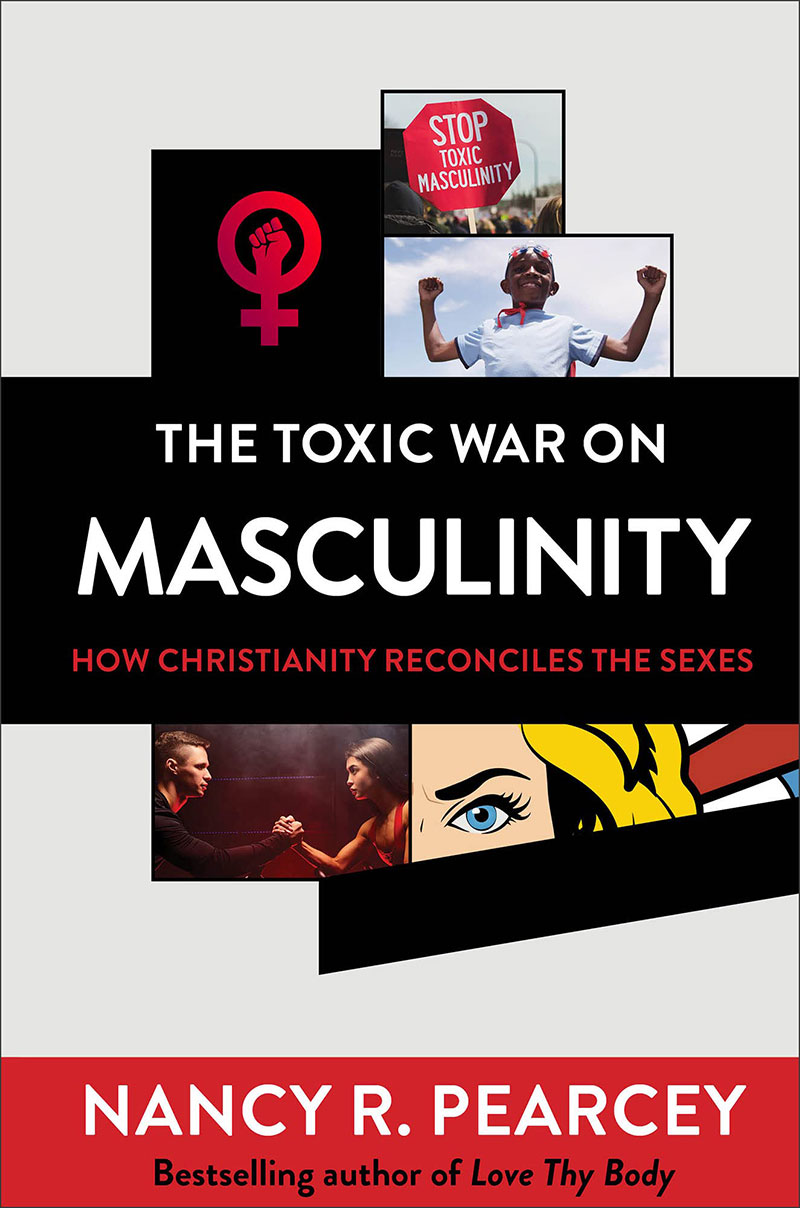
Why is attending church so important? Churchgoing exposes men to messages telling them the family was created by God—it is not some evolutionary accident. Church tells men that they are accountable before God for how they treat their family. “Let’s face it,” Wilcox says, “the church is one of the few institutions in the United States where men encounter other men who are interested in talking about fatherhood and marriage—and interested also in practicing what they hear preached.” He goes on:
You don’t often find it at work; you don’t find it in the sports stadium; you don’t find it in the local tavern. But in church what you will find is a message and ethos that is family-focused and gives men the motivation to attend to their families.
Wilcox concludes:
Academics need to cast aside their prejudices about religious conservatives and evangelicals in particular. Compared to the average American family man, evangelical Protestant men who are married with children and attend church regularly spend more time with their children and their spouses. They also are more affectionate with their children and their spouses.
The bottom line is that Christians have a practical answer to resolving the war between men and women—one that has stood up to empirical testing. We should be bold about bringing it into the public square as a solution to the charge of toxic masculinity.
Nancy Pearcey is a professor and scholar in residence at Houston Christian University. She is the author of several bestselling books, which have been translated into 19 languages. Her most recent book is The Toxic War on Masculinity: How Christianity Reconciles the Sexes, which grew out of her 2018 Touchstone conference talk.
subscription options
Order
Print/Online Subscription

Get six issues (one year) of Touchstone PLUS full online access including pdf downloads for only $39.95. That's only $3.34 per month!
Order
Online Only
Subscription

Get a one-year full-access subscription to the Touchstone online archives for only $19.95. That's only $1.66 per month!
bulk subscriptions
Order Touchstone subscriptions in bulk and save $10 per sub! Each subscription includes 6 issues of Touchstone plus full online access to touchstonemag.com—including archives, videos, and pdf downloads of recent issues for only $29.95 each! Great for churches or study groups.
Transactions will be processed on a secure server.
more on Feminism from the online archives
more from the online archives
calling all readers
Please Donate
"There are magazines worth reading but few worth saving . . . Touchstone is just such a magazine."
—Alice von Hildebrand
"Here we do not concede one square millimeter of territory to falsehood, folly, contemporary sentimentality, or fashion. We speak the truth, and let God be our judge. . . . Touchstone is the one committedly Christian conservative journal."
—Anthony Esolen, Touchstone senior editor





